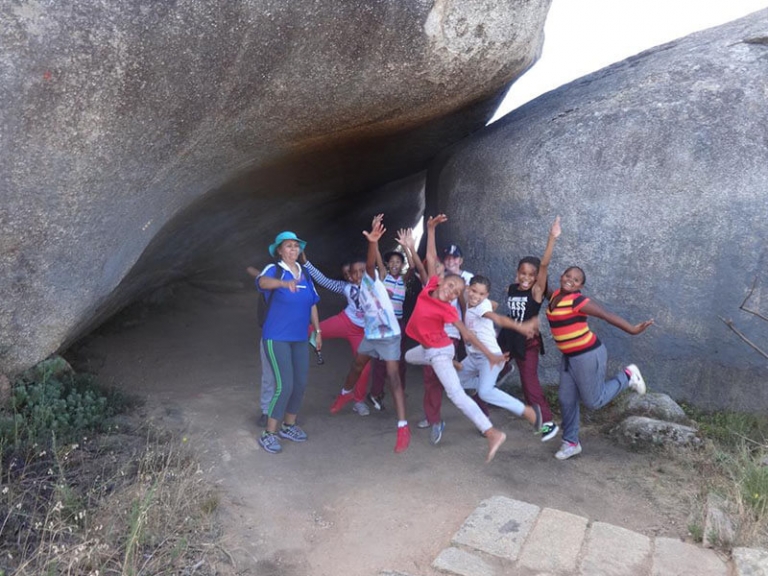By Hadley Lyners, CLT Environmental Education Coordinator
With the Absa Cape Epic underway, The Cape Leopard Trust traditionally seeks to increase environmental education awareness around the survival of Cape leopards along the route of this exciting cycling race. When our CEO, Helen Turnbull, asked the environmental educators whether they knew which school in the Boland area they could spread awareness to, it was an easy decision.
Every time we travel with groups to the Cederberg via Wellington, we pass a small, rural school which serves mostly local farmworkers’ children. Soetendal NGK started in the 1980s and initially had just over 150 learners from neighbouring farms and small settlements. Today they have 354 learners at the school. The school gets very little support from government and owes its existence largely to a church group and one individual land owner who donated land for a sport field, offered to have land levelled with machinery, etc. Furthermore there is no support from other farmers.
From having national systemic test results of about 3% the principal, Mr Coraizin and his team have managed to bring it up to 56%. They are the highest achieving of the approximately 25 primary schools in the district if one excludes the two ex-model C schools that have higher results. The teachers offer a lot of extra time to try and give the kids a boost when it comes to learning. One can see that the principal enforces good discipline, but is mindful that good staff relationships are vital to running a school. He was teaching in class whilst standing in for an absent teacher when I visited the school to do our presentations.
Given the size of their make-shift hall (which is basically two classrooms combined with a partition in the middle) I had two time-slots for presentations to all the learners at the school. The first session for grades R-3 was from 10h00-11h00 and the second session for grades 4-7 was from 11h30-12h30. I introduced the Cape Leopard Trust and the work that we do. I explained to them how our researchers use camera traps to find out more about the leopards and how the use of the camera traps has given us insights into the animals that are found in the Western Cape and the surrounding mountains. I also showed them some quick videos of leopards and had leopard sounds playing when they entered the hall. I was surprised at the spontaneous clap of hands at the end which showed me that the kids really enjoyed seeing the animals. At the end of the presentations I did a quick quiz about the animals that they had learned about and handed out the Environment magazine and some CLT stickers to those who answered correctly. I also left some more Environment magazines for the classes, a few CLT Art Competition 2016 calendars and leopard puzzles that the kids could enjoy in class.
At 13h00, a selected group of 20 (2 teachers and 18 learners) joined me on a hike up Paarl Mountain. I discovered that even though they are relatively close, many of the learners have not been there yet. Where we went was a first for the 2 teachers as well.
The huge, bulbous, granite rock is formed by three rounded outcrops that make up Paarl Mountain and according to the Drakenstein municipality it is the second largest granite outcrop in the world. We ascended Bretagne Rock first after I informed them about the history of the area, spoke of the indigenous people that roamed there and took some time out to have a look through binoculars into the surrounding landscapes. We also found some rock agamas and I could speak to them about these interesting little reptiles. At the top the learners had a look of achievement and we took some photographs to capture the moment.
We then moved along to Paarl Rock where we explored a cave, spoke of the Khoi and San people and their rock paintings. Afterwards I did a little activity with them using mini-microscopes. They formed groups and had to observe items which they collected. They then had to explain what they see and then pass their items on for the rest to see what they were talking about. We stopped to read some information boards and they even found a dead scorpion which gave me a chance to talk about scorpions.
After a long day we headed back home and I dropped most back at school. Some kids lived quite far from school on local farms and I decided to drop them home safely. Thank you to all the organisers of the Absa Cape Epic and our own staff for creating an opportunity and a platform for us to continue raising awareness of the plight of Cape leopards and to teach environmental education.
What an epic adventure!

















